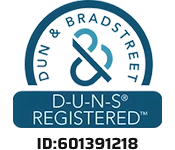The design of this car armrest base is relatively complex. The structural features of the product include: the internal structure of the armrest base is quite intricate, containing multiple undercuts, and some of the clip positions have certain angles. These design elements increase the difficulty of mold design and manufacturing. The raw part has low aesthetic requirements since it will undergo foaming and leather covering processes afterward.

Customer Requirements For Automotive Armrest Bases Production
Our customer has strict requirements for the product’s functionality and production efficiency:
Functionality Requirements: The product needs to have good structural stability and assembly precision to ensure its functionality during use.
Quantity Requirements: As the product is made using rapid tooling, the quantity required is not high, with the primary focus on achieving its functionality.
Solutions to Manufacturing Challenges of Car Armrest Bases
Rapid Mold Design:
- For the parts with significant undercuts and angles, we designed multiple sliders and inserts to ensure the perfect formation of all details.
- During the design process, special attention was given to the design of the joint areas. By optimizing the gate location and cooling system, we reduced the sink mark issues at the joint areas during injection molding.
High Precision Processing:
- We use high-precision CNC machining technique to ensure the dimensional accuracy of every part of the mold.
- The mold undergoes meticulous treatment to ensure high precision of the product structure, meeting the customer’s functionality requirements.
Rapid Tooling Manufacturing:
- Given the customer’s low quantity requirement, we adopted rapid tooling manufacturing technology, which meets the customer’s time requirements while ensuring high product quality.
- By optimizing injection molding parameters such as injection pressure, speed, and holding time, we further control the dimensional accuracy and surface quality of the product.

















